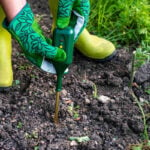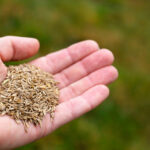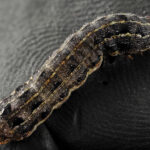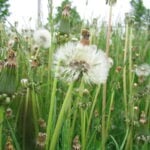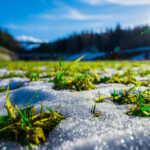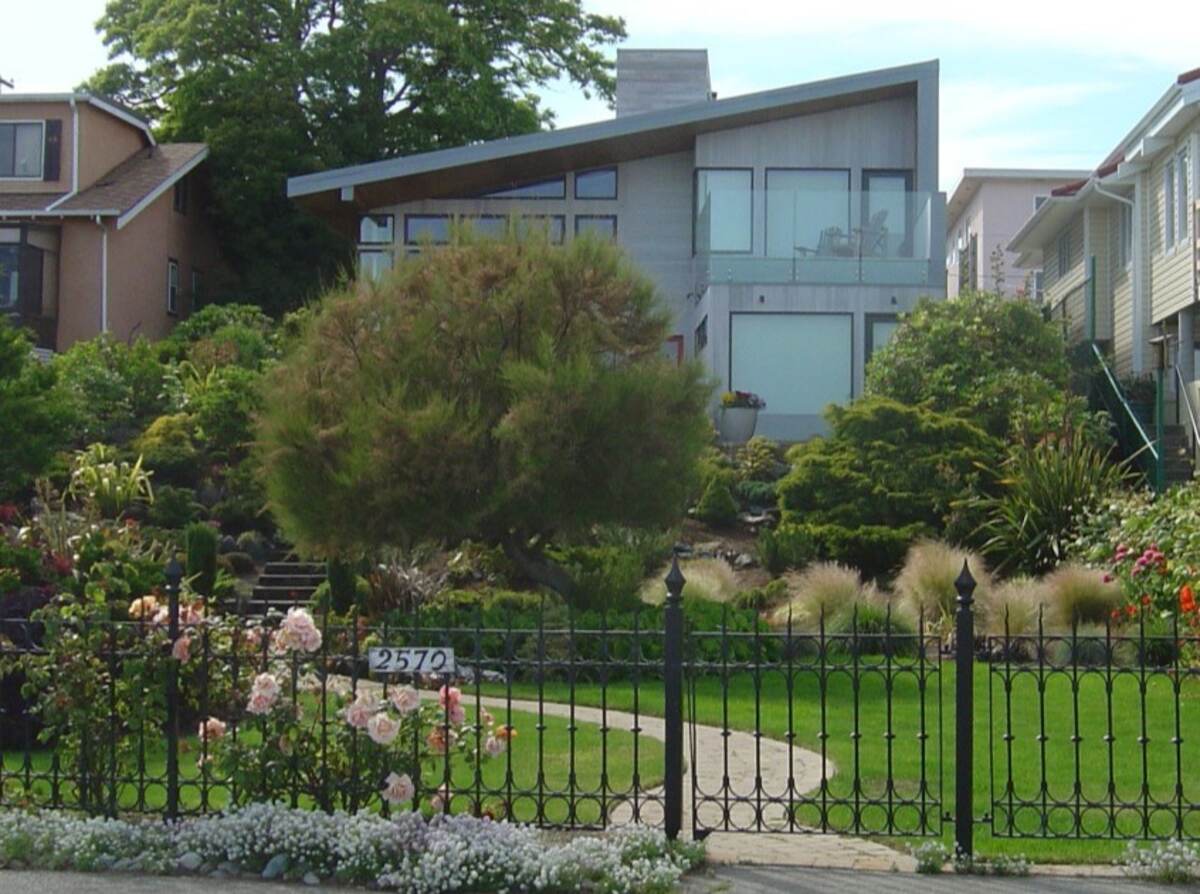
In the spring, you should clean up, dethatch, and apply pre-emergent herbicide. You should also aerate and overseed then or in the fall. In the summer, you should either thoroughly water your lawn, or let it go dormant. In the fall, you should slow down with mowing and winterize your lawn. The best times to fertilize depend on your grass type.
Overall, taking great care of your lawn results in lush, green turf. But you need to do the right job at the right time because factors like weather and temperature matter. Here’s your month-to-month lawn care schedule for the Pacific Northwest.
March
Clean up
The first step to a beautiful yard is to clean up all the leaves, sticks, and other debris that have accumulated on your yard over the winter. A clean yard not only looks much better but is also less prone to lawn diseases.
However, ensure that you wait until the snow melts before you rake leaves. This is usually by the end of March but may be as early as February.
Start Mowing
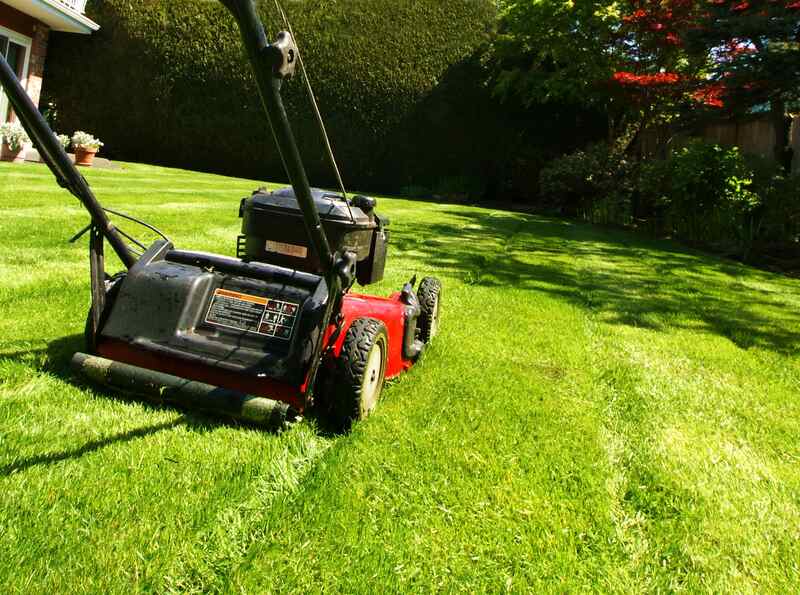
First, drag out your lawn mower, replace the gas, and ensure your blades are sharp. Then start mowing around March. You want to mow up to two times this month and increase the mowing frequency in the months that follow.
Dethatch
Dethatch your lawn before the weather gets too hot. The best time to dethatch is in March, but ensure you do it by mid-April at latest. If you happen to skip dethatching in the spring, wait until summer’s hot weather passes.
Apply Pre-Emergent Herbicide
The best time to apply pre-emergent herbicide is when the forsythia shrub has been blooming for a week or more. That’s usually in March or April.
April
Mow More Often
In April, increase mowing to weekly. Pay attention to your lawn’s growth rate. Different species of grass grow at different rates, so adjust mowing frequency based on your grass type.
Use Pre-Emergent Herbicide If You Haven’t Yet
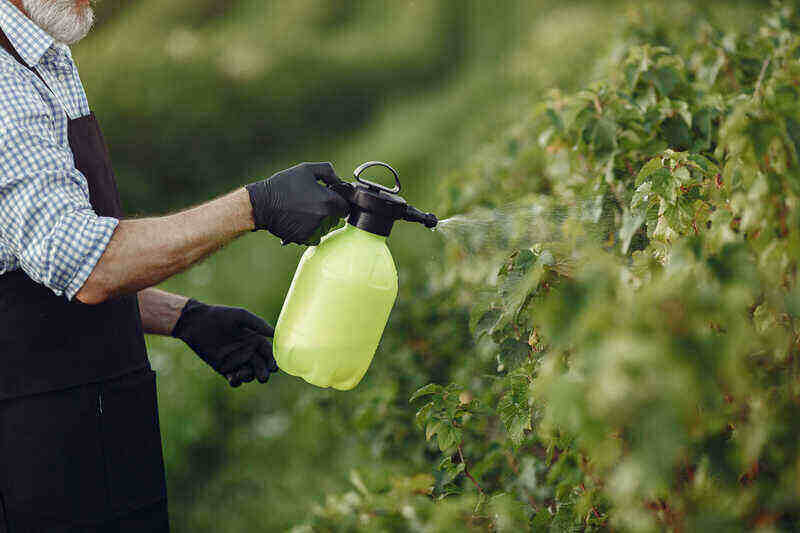
As mentioned above, the best time to use pre-emergent herbicide is when the forsythia shrub starts blooming for a week or more. This may be in March or April.
May
Mow Even More Often
You should mow between four to six times in May.
Control Broad-Leaf Weeds
Hand-pluck any broad-leaf weeds, like clover and plantains. Do so as soon as possible, before they get the chance to seed. If needed, you can also use a post-emergent herbicide from approximately May to mid-June.
Aerate Cool-Season Grasses
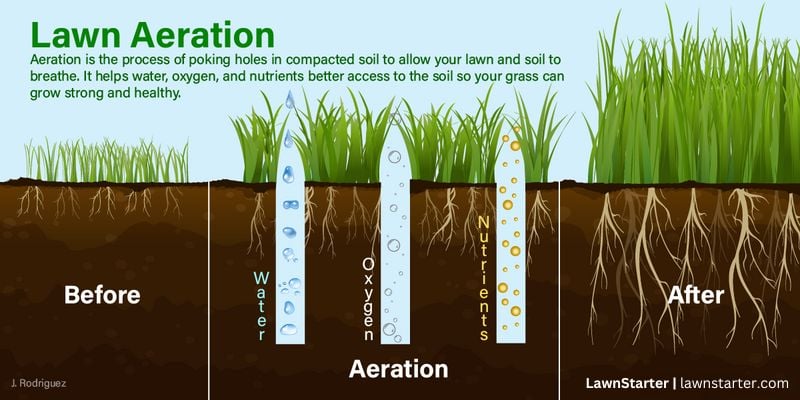
You can aerate at nearly any time during the growing season, but it’s best to do it before you overseed and fertilize. So, that will be either in May or in September for cool-season grasses and in the summer for buffalograss.
For more, check out our guide on core aeration.
Overseed Cool-Season Grasses
Overseed either in May or September, after you aerate and before you fertilize.
Fertilize Cool-Season Grasses
Although the earliest you could do it would be around April, May is the best time for the first round of fertilizer for cool-season grasses. This period is when they usually grow rapidly. Avoid fertilizing too early in the spring, because you’ll just cause grass to grow at the expense of its roots.
June
Continue Mowing
You should mow between four and six times in June.
Water Your Lawn or Let it Go Dormant
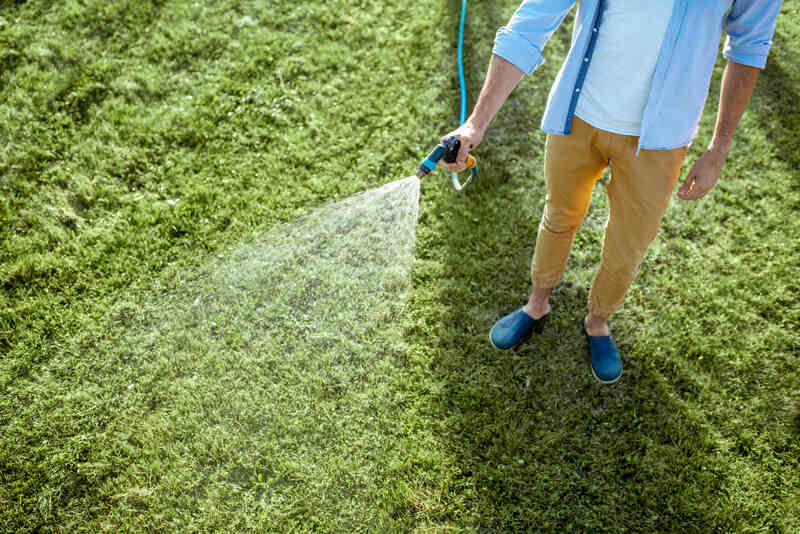
In the summer, you have two options: either water your lawn deeply and more frequently or let your lawn go dormant.
Most Pacific Northwest states’ lawns benefit from around 1 to 2 inches of water weekly in the summer. Parts of Washington, Oregon, and Idaho tend to be sunnier than the rest of the PNW, so some lawns may need more water. Always watch for signs of dryness in your grass, such as a blue-green color and visible footprints. Check out this article for more signs your lawn needs watering.
However, letting your grass go dormant is better for the environment. If you let your lawn go dormant, water it seldom, slowly, and deeply.
Control Broad-Leaf Weeds
If you haven’t used post-emergent herbicide yet in May, and want to, you can also do it in June.
Fertilize Cool-Season Grasses a Second Time

Apply another round of fertilizer according to your soil test. Be careful that you don’t leave it till the weather gets too hot. If you fertilized in April the first time, your second round could already be in May.
Aerate Buffalograss
You can aerate at nearly any time during the growing season, but it’s best to do it before you overseed and fertilize. The best time to aerate buffalograss is in the summer, around June.
Overseed Buffalograss
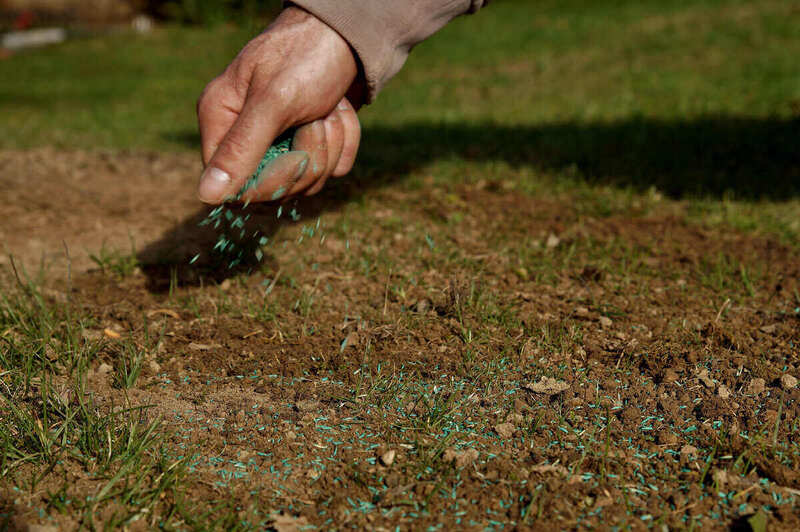
The best time to overseed is after you aerate and before you fertilize. So, that would be in the summer for buffalograss.
Fertilize Buffalograss
You don’t need to fertilize at all, because buffalograss doesn’t need fertilizer. But if you want to enhance its color and density, keep in mind that less is more. Apply 0.5 to 2 pounds of nitrogen per 1,000 square feet. Two applications in the summer, 6 to 8 weeks apart, are more than enough.
July
Continue Mowing
You should mow four times in July.
Continue Watering or Water Only Once
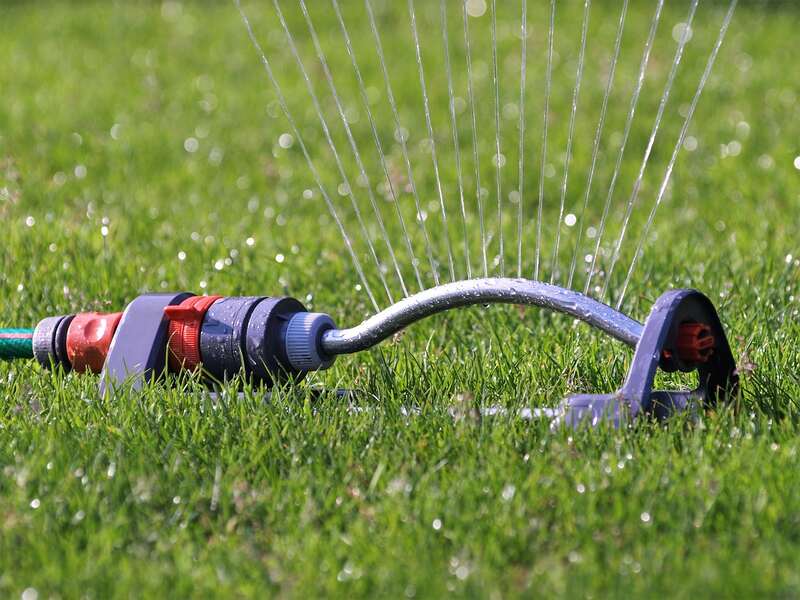
If you want to carry on watering your lawn and keep it green, provide it with 1 to 2 inches of water weekly. Parts of Washington, Oregon, and Idaho tend to be sunnier than the rest of the PNW, so their lawns may need more water. Always look out for signs of dryness in your grass, such as a blue-green color and visible footprints.
If you let your grass grow dormant, water it only once in July. Make sure you water it slowly and deeply. Avoid walking over dormant grass excessively, or you may damage it.
August
Continue Mowing
You should mow weekly times in August.
Continue Watering or Water Only Once
If you want to carry on watering your lawn and keep it green, provide it with 1 to 2 inches of water weekly. Parts of Washington, Oregon, and Idaho tend to be sunnier than the rest of the PNW, so their lawns may need more water. Always look out for signs of dryness in your grass, such as a blue-green color and visible footprints.
If you let your grass grow dormant, water it only once in August. Once again, make sure you water it slowly and deeply.
Fertilize Buffalograss a Second Time (if Needed)
Buffalo grass needs minimum fertilizer. Apply 0.5 to 2 pounds of nitrogen per 1,000 square feet. Two applications in the summer, 6 to 8 weeks apart, are more than enough, although one may suffice.
September
Continue Mowing
You should mow between 4 to 6 times in September.
Control Broad-Leaf Weeds
Once again, the best method of weed prevention is proper lawn care and hand-plucking. But if your weeds are too much to handle, September to early October is another good time to use a post-emergent herbicide.
Aerate Cool-Season Grasses
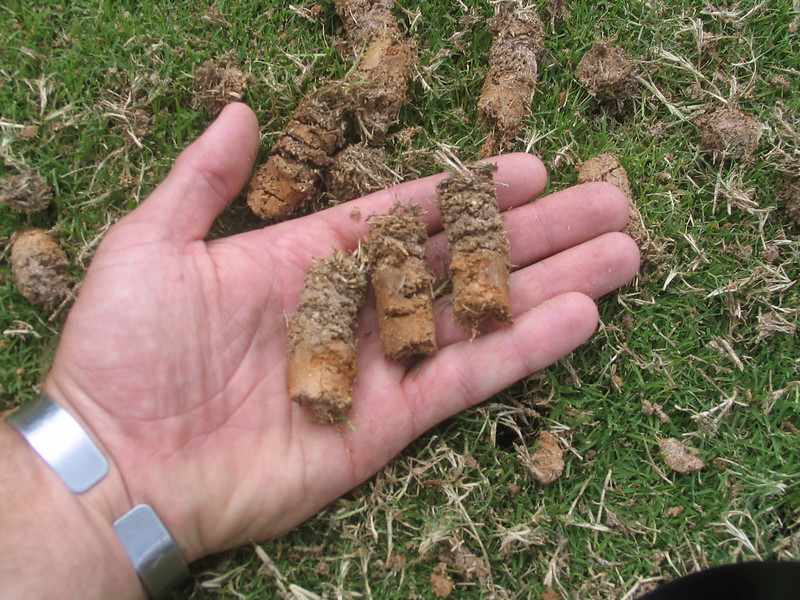
You can aerate cool-season grasses pretty much anytime throughout the growing season. But as mentioned above, the best time to do is in May or September, before you fertilize.
Overseed Cool-Season Grasses
The same rule that applies to aeration once again also applies to overseeding: the best time to do it is in May or September, before you fertilize.
Fertilize Cool-Season Grasses a Third Time
Apply another round of fertilizer to cool-season grasses according to your soil test.
October
Reduce Mowing
Gradually slow down with mowing until you stop. You should mow 2 to 3 times in October.
Control Broad-Leaf Weeds if You Haven’t Yet
If you haven’t used post-emergent herbicide yet in September, and you want to, October still works.
November
Fertilize Cool-Season Grasses a Fourth Time
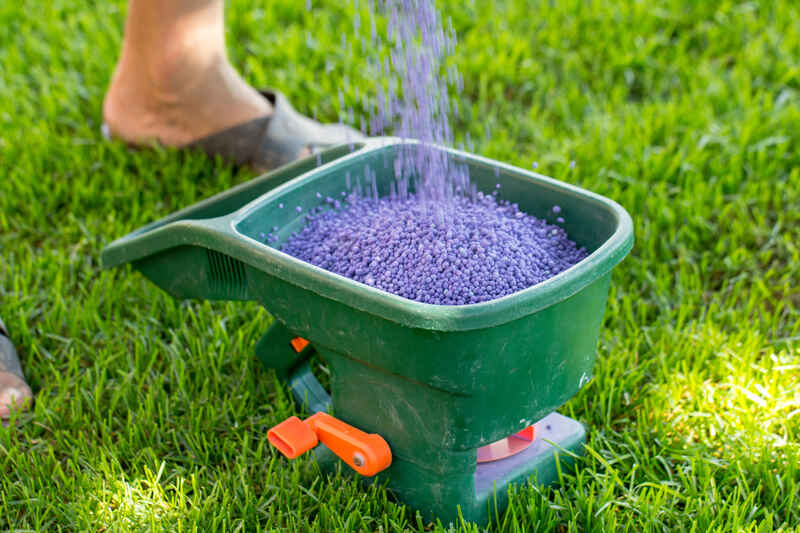
Early in November, apply another round of fertilizer according to your soil test. If you live in Idaho, skip this step if you’ve already applied three pounds of actual nitrogen per 1,000 square foot this season. That’s the maximum recommendation.
Prepare for the Spring
Winter is the perfect time to sharpen your mowing blades and winterize your lawn. Once your grass goes dormant, stop mowing until spring, and turn off your irrigation.
Rake leaves away from the lawn. Alternatively, you can also use a mulching mower to add organic matter to it. But if you still have some jobs on your lawn care to-do list for the year, it’s better to remove the leaves completely.
Remember to not walk on water-soaked or frozen grass. Also, don’t pile snow on grass.
FAQ
What native plants and trees grow in the Pacific Northwest?
You can choose from a variety of native plants and trees to accompany your Pacific Northwest lawn. For example, oceanspray, Oregon white oak, and evergreen huckleberry.
What is the best grass for the Pacific Northwest?
According to David McDonald, a mix of turf-type perennials ryegrasses and fine fescues are the best option for the Pacific Northwest. You can read more in his publication, Ecologically sound lawn care for the Pacific Northwest.
Nevertheless, a range of cool-season grasses grow in the region, and even the warm-season buffalograss. Check out “Choose the Best Grass” above to find out which one is right for you.
What is the climate in the Pacific Northwest?
The Pacific Northwest has a maritime climate influenced by the Pacific Ocean. It typically experiences mild, wet winters and warm, dry summers. Inland areas are drier and hotter.
Grow a Lush Lawn in the Pacific Northwest
What a long list of monthly lawn care jobs. With so man other things on your to-do list, consider hiring a local pro instead, who will handle your lawn care for you. Get an instant quote in these cities:
Seattle, Tacoma, Bellevue, Portland, Eugene
Expert sources
- Washington State University Benton County Extension
- Washington State University King County Extension
- University of Idaho Idaho Master Gardener Extension
- Oregon State University
- PennState Univeristy Extension
- Montana State University
- Portland Nursery
- National Park Service
- Office of the Washington State Climatologist
Main Image Credit: pnwra / Flickr / CC BY 2.0
